How Asbestos Kills America’s Veterans
Written by Tim Povtak | Edited By Walter Pacheco
The U.S. government never warned servicemen who fought for America about the deadly long-term effects of asbestos exposure in the military. Now, a broken VA health care system fails them a second time by abandoning veterans dying of mesothelioma.
America’s veterans who protected and served their country so admirably are being treated so poorly by those they defended so loyally.
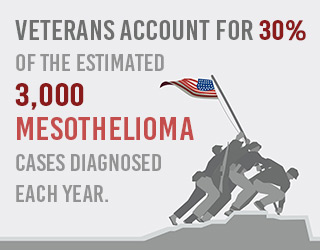
There are approximately 21 million U.S. military veterans living today, accounting for 7% of the total population. Yet veterans account for 30% of all the mesothelioma legal claims annually filed in the United States. Approximately 3,000 mesothelioma cases are diagnosed in the U.S. each year, according to the U.S. Centers for Disease Control and Prevention.
The numbers don’t lie. The U.S. government targeted its veterans. And the military broke its own motto of “No Man Left Behind.”
The military’s extensive use of asbestos products throughout much of the 20th century is now haunting veterans 20 to 60 years after they served, leaving many of them frustrated, isolated, disillusioned and dying prematurely.
Asbestos, a naturally occurring mineral, was coveted for its ability to strengthen and fireproof most everything, making it invaluable to all branches of service. Yet those in command, who were aware of the earlier warning by the Surgeon General of the U.S. Navy, ignored its toxicity and exposed millions of America’s veterans to potential health problems in the future.
Veterans thought asbestos was protecting them. But in reality, it’s been killing them.
“I enjoyed being in the Navy. I was proud to serve, and I wish I had stayed longer,” said veteran Raul Lopez of Texas. He struggles daily now with painful, asbestos-caused pleural plaques around his lungs. The condition stems from his years (1963-67) aboard Navy ships.
But I’m feeling left behind now. So are a lot of my former shipmates. I know this is going to take me down eventually, and it’s discouraging because the VA doesn’t really want to help. I’m on the verge of just giving up.Raul LopezU.S. Navy Veteran
VA Is Unresponsive to Veterans with Mesothelioma
The majority of U.S. veterans, even those with service-related health issues, remain proud of having served America. They are particularly proud of their own branch of military service. The loyalty rarely wavers.
Their frustration, though, often involves the much-criticized U.S. Department of Veterans Affairs (VA), the federal benefits and support system originally designed to assist veterans after their military service ends.
Unfortunately, the VA grew into another bloated, federal government bureaucracy plagued with well-chronicled mismanagement, unaccountability and waste. The VA today is at its unwieldy worst with 300,000 employees, more than 1,600 health care sites and a $60 billion annual budget. Sadly, the agency is ignoring veterans who need — and deserve — its services the most.
It has failed those with asbestos-related diseases, much like the military hierarchy, which should have been aware of the danger, failed to warn its soldiers and sailors long ago about the toxicity of asbestos.
VA branches mostly responsible for failing veterans with asbestos-related diseases
- Veterans Health Administration: Provides health care coverage for almost 40 percent of our nation’s veterans.
- Veterans Benefits Administration: Oversees disability claims, entitlements and benefits.
“It’s mind-boggling the way the VA works now,” said Michael Johnson of California. His father, U.S. Marine Corps veteran John Johnson, died of mesothelioma in 2012 after the Veterans Health Administration failed to help him. “My father believed in the VA, but it absolutely let him down.”
My father believed in the VA, but it absolutely let him down.Michael JohnsonSon of U.S. Marine Corps Veteran
John Johnson’s case was typical. He had served in the Marine Corps in the mid-1960s, spending significant time in Vietnam. Forty years later, doctors at the North Las Vegas VA Medical Center misdiagnosed him. He was subsequently sent to the VA Long Beach Healthcare System, which was not equipped to handle this rare and complex cancer. His treatment was haphazard at best.
Neither facility was experienced in asbestos-related diseases, yet they failed to tell him about the VA’s new Comprehensive Mesothelioma Program in nearby Los Angeles. Strangely, they knew nothing about it. By the time Johnson’s family members had found the facility on their own, it was too late to save him.
The lack of communication within the VA system is stunning.
Filing VA Claims Is a Complicated Process
Veterans with asbestos-related health issues often complain about the difficulty — and frustration — of filing a claim with the VA to receive benefits for their service-related illnesses.
The complexity of the claims makes them tough to file without help from experienced Veterans Service Officers or Claims Agents. Filing for an asbestos-related disability further complicates the process.
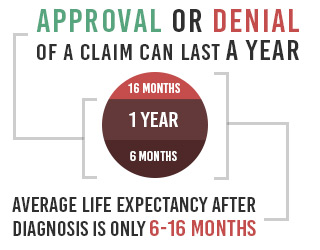
The wait time for approval or denial of an asbestos-related claim can last a year, according to several veterans who spoke with The Mesothelioma Center. Meanwhile, the average life expectancy of a veteran after a mesothelioma diagnosis is only 6-16 months.
The VA lately has been touting impressive statistics regarding its improved efficiency, but the numbers are not an accurate picture of asbestos-related claims. The number of all pending claims has dropped from 883,930 in 2012 to 372,783 in October 2015. The VA also touts an overall 70 percent approval rate on all claims.
The biggest frustrations I hear from veterans are how long it takes, the unresponsiveness of the VA, and the lack of any direct communication through the process. In general, it’s an inefficient process.Aaron MunzDirector of the Veterans Department at The Mesothelioma Center
The number of all backlogged claims has gone from 611,073 to 76,354 during the same time period.
Yet those numbers do not separate asbestos-related claims, which typically take longer to process because they are more complex.
“Overall, the VA has made significant improvements in processing claims,” Munz said. “But those statistics don’t represent the complex claims we handle that come decades after exposure to asbestos, when there were no records kept. It’s a whole different ball game.”
Munz, as Director of the Veterans Department at The Mesothelioma Center, specializes in filing asbestos-related claims for veterans. He understands the extensive documentation, summaries and proper wording required for a successful claim.
We have the expertise in preparing what is critical. Without that expertise, it can be very challenging. To the average person, it’s tough to understand what the VA is looking for. That’s where we can help.Aaron MunzDirector of the Veterans Department at The Mesothelioma Center
Even on one of the VA’s own websites, the frustration is obvious. Following its story that proudly touts the lowest backlog of cases in VA history are dozens of responses from unhappy veterans struggling with claims. They express sentiments of an uncaring, unresponsive and unappreciative VA.
Frustration Among Veterans Is Overwhelming
Too many times, obvious cases of asbestos exposure in the military are denied. According to numerous veterans, denials inevitably lead to appeals that delay the process for several more months.
The length of time adds to the frustration, particularly when a claim is eventually denied.
Navy veteran Ron Graus, 67, of Detroit spent much of his time on ships in the waters off Vietnam (1965-68), serving as a boiler technician — one of the military jobs that rendered workers most vulnerable to asbestos exposure.

Although he has suffered from COPD for more than a decade, the VA doesn’t recognize it as an asbestos-related disease. He was diagnosed in October 2014 with pulmonary fibrosis, a disease the VA does recognize. Shortly afterward, he filed a disability claim with the VA.
Six months later, his rejection notification arrived. The doctor who had examined him didn’t document the asbestos exposure properly in the case. Graus appealed quickly after a second doctor helped file another claim, but his appeal was denied in October 2015.
A third pulmonologist will examine him again in mid-November. Graus hopes this doctor can convince the VA about the severity of his condition.
Graus struggles to catch his breath when he walks a block outside his home. Standing in the shower for more than five minutes tires him. He doesn’t need an oxygen tank yet, but he’s getting close.
I feel really let down by the Navy. It’s terrible. It’s all about the money and the benefits. They’re trying to say none of my problems stem from being a boiler tech in the Navy, but you know it was. Asbestos caused this. I think what they’re doing to me is just wrong.Ron GrausU.S. Navy Veteran
Too often, the VA official deciding whether to approve or deny a claim is not versed in the intricacies of asbestos diseases, which usually have lengthy latency periods. Mesothelioma is often not diagnosed until 20-50 years after exposure to asbestos.

We can help you or a loved one file asbestos-related VA claims and access potential benefits.
Get Help NowGary L., for example, is a U.S. Coast Guard veteran (1971-75) who had his disability claim recently denied, despite developing mesothelioma a year ago. He already underwent aggressive surgery. His asbestos exposure was extensive on the three older ships where he served. And it was his only known exposure.
His denial letter, which arrived nine months after it was filed, was baffling, but it exemplified the mistakes the Veterans Benefits Administration can make.
It said I was denied because ‘your service records do not contain any complaints, treatments or diagnosis of this condition.’ It was like they didn’t even read my application. They had no idea what an asbestos disease was or how it worked. I had sent 67 pages of documentation that included every test I took.Gary L.U.S. Coast Guard Veteran
The VA admits mistakes can be made, reporting a 14 percent error rate on its own website. A report from the Center for Investigative Reporting, though, recently put the error rate closer to 38 percent.
Asbestos Diseases Recognized by the VA
To be approved for an asbestos disability claim, applicants must have a doctor verify the disability, along with documentation that shows the illness stemmed from exposure during military service, not from an activity performed during the applicant’s civilian life.
The VA recognizes a variety of diseases caused or likely caused by asbestos exposure, including:
- Pleural mesothelioma
- Peritoneal mesothelioma
- Asbestosis
- Pleural plaques
- Pleural effusions
- Fibrosis
- Lung cancer
- Bronchus cancer
- Gastrointestinal tract cancer
- Pharynx cancer
- Urogenital system (except prostate) cancer
The VA recognizes asbestos as the cause of mesothelioma and asbestosis, but veterans still must prove “it is at least as likely as not, that your asbestos illness was caused by your military service, rather than your civilian exposure.” All other diseases must have a doctor documenting that asbestos was the cause.
Except for mesothelioma and lung cancer, which typically both receive a 100 percent disability rating, all other ratings are based on the degree of disability. Pleural diseases, like the kind affecting Lopez, are based on strict lung capacity test results.
Unless lung capacity measures less than 80 percent, the VA will not award compensation. Obstructive airway diseases, such as asthma, COPD, chronic bronchitis and emphysema, are not considered asbestos-related by the VA, even though many medical professionals believe they could be.
I think for the most part, the VA just wants all us old sailors to go away and die quietly. If you’re not in a wheelchair and getting oxygen, they don’t want to recognize the problem you have. It doesn’t seem right. When I joined the Navy at age 18, I didn’t have asbestos around my lungs. But I had it when I came out.Raul LopezU.S. Navy Veteran
U.S. Military Never Warned Sailors and Soldiers
The reason U.S. military built ships with asbestos was to help protect servicemen from immediate harm. It was an admirable reason that helped build the most efficient and effective war machines in the world. It helped America become the greatest nation in history.
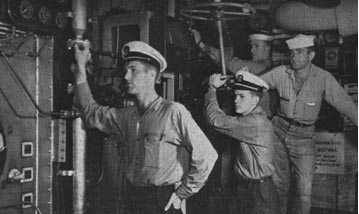
The military buildout before World War II included a push to utilize asbestos extensively for its ability to strengthen, fireproof and protect almost everything. Each branch of service — Navy, Army, Air Force, Marines and Coast Guard — rushed to use asbestos.
Ships, submarines, planes, tanks, jeeps and transport vehicles were loaded with asbestos to make them stronger and safer for times of war. Military housing and all buildings on bases included asbestos products. It made the ships safer and the vehicles and weapons stronger.
A 2022 study revealed that the large excess of mesothelioma deaths seen among atomic veterans was explained by asbestos exposure among enlisted naval personnel.
Most everything built for the military from 1935 to 1975 was filled with asbestos products, and thousands of those products were used in the continued development and growth of the military.
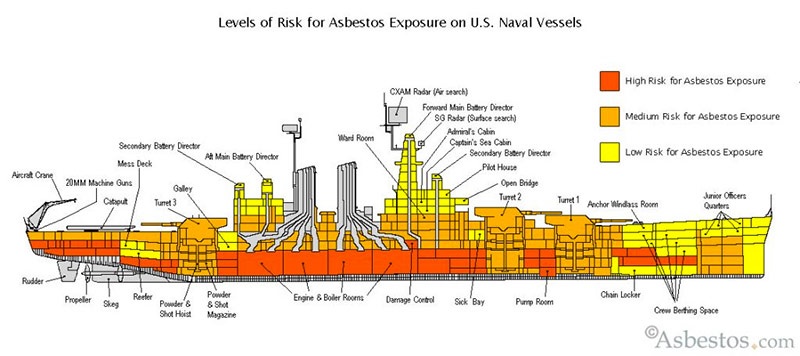
Unfortunately, the decisions to use asbestos — and not find an alternative — were based more on present-day needs, rather than potential and future health issues.
The incidental inhalation or ingestion of those microscopic asbestos fibers was a toxic combination, although its effects would not materialize for decades. On ships that were covered with asbestos, inhalation in close quarters was unavoidable. Engine rooms and boiler rooms on ships were the worst.
Asbestos may have protected American soldiers and sailors initially. But it would start killing them decades later. And our leaders knew – or should have known.
The Surgeon General of the U.S. Navy issued a warning about the risk of asbestos exposure before the start of World War II in 1939. It was called Hazards of Asbestosis, and it outlined the dangers at the New York Navy Yard. Even earlier, leading medical journals were linking asbestos to asbestosis.
Although renowned scientist Irving Selikoff in 1962 uncovered a definitive link between asbestos exposure and cancer, the military continued to increase its reliance on the deadly substance.
The military was addicted to asbestos.
Timeline of Asbestos Use in U.S. Military
Discussions among doctors about the dangers of asbestos started in the early 1920s, and while the medical and scientific research communities released confirmations about its deadly side effects, the U.S. military didn’t heed their warnings and continued to build its vessels.
-
1922
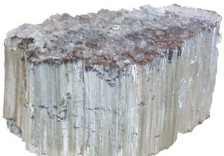
-
1924

-
1938

-
1939
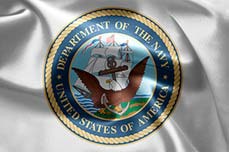
-
1943

-
1955

-
1971

-
1973
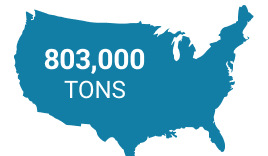
-
1975

-
1980

-
2002
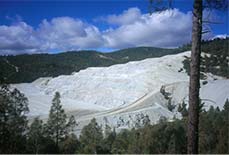
Health Care: VA vs. Private
The VA health care system is the largest integrated health care system in the country, and today it’s used by approximately 8 million veterans.
VA health care has improved overall in recent years, despite well-chronicled long wait times at certain facilities and substandard care at others. The same issues also plague private health care systems.
Studies throughout the past decade remain split on whether VA health care is equal to private health care systems, which also vary widely in their quality. There is no definitive answer on which is better overall. It depends on the facility and patients’ opinions.
We have some veterans who think their VA is great, and the doctors they have are wonderful. But we also hear the other side: Individual facilities are not doing as well. There is considerable frustration involved.Aaron MunzDirector of the Veterans Department at The Mesothelioma Center
The VA health care system now has two facilities — in Boston and Los Angeles — capable of providing excellent care for asbestos-related diseases, using staff that splits their time between nearby private hospitals. Members of those staffs, though, have been frustrated in the past by the inability or unwillingness of the VA to alert veterans to their availability.
Unless you lived in either Boston or Los Angeles, it wasn’t easy reaching — or even finding — them. There was no mention of their specialties on the VA’s official website until mid-2015. That changed only after John Johnson’s family waged a campaign in 2014 to bring attention to the glaring problem.
Most doctors in the sprawling VA system, who could have referred patients there, also were unaware of their presence. The majority of veterans with asbestos-related diseases were subsequently treated in the VA system by doctors with little knowledge of the disease.
One mesothelioma specialist, only recently, performed the first intraoperative heated chemotherapy procedure in the VA health care system for a patient with pleural mesothelioma. It was a procedure already performed in non-VA hospitals for more than a decade.
Asbestos Reduced, but Disease Remains
Although the use of asbestos in the military has been reduced significantly in recent decades, the incidence of disease remains steady today, raising the importance of improving future care.
Many Navy ships built with asbestos products in the ’70s remained in use years later, exposing veterans who served in the ’80s and who are just now being diagnosed. Air Force planes and Army transport vehicles packed with asbestos also stayed in use.

Asbestos was still among the contaminants at 32 Army installations across the country that were realigned or closed in the late ’90s, costing the U.S. close to $1 billion and many more lives in the future.
Veterans are unable to take legal action directly against the military or the U.S. for their asbestos disease, but they can file lawsuits against companies that provided the materials and products to the military.
Asbestos litigation is the longest-running mass tort in U.S. history, and more than 1 million individuals have brought claims against thousands of businesses. Veterans have been a part of that.
While the VA has improved its overall operations recently, veterans with asbestos-related problems are still feeling abandoned. Just as the military was responsible for creating the problem, it needs to work harder now at taking care of the American veterans who served so admirably, making sure no one is left behind.



